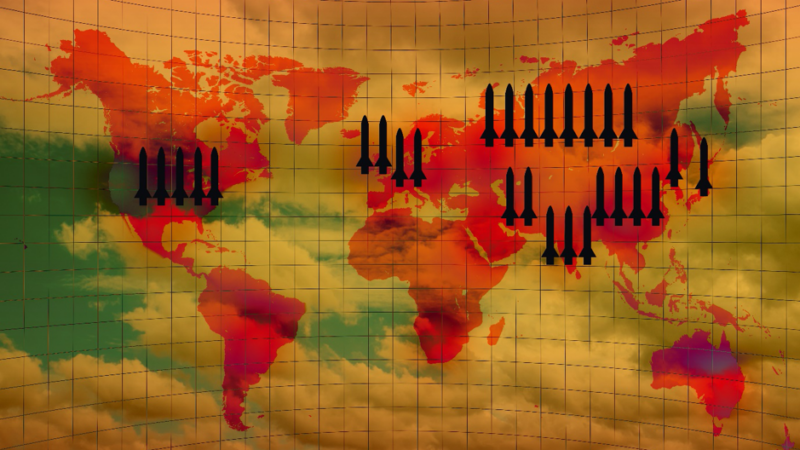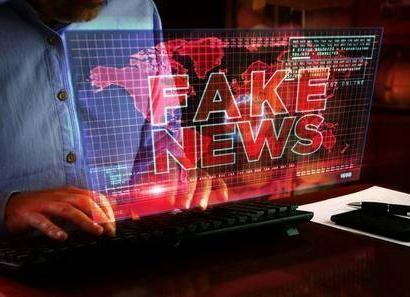Abstract: In popular consciousness, the Cold War is contextualised as a period of crises and tension underwritten by nuclear arms. However, analysis of various crises and strategic considerations of the period makes it apparent that conventional armed forces played an enduring, understated, and overlooked role in the conflict’s origins, maintenance, and end. Without such forces, there would be no Cold War, as it is understood. Further, without the maintenance of large, capable conventional forces—be they land, naval, or air—it is possible that nuclear powers would have few alternatives to nuclear escalation. With these considerations in mind, this paper argues that the Cold War was not the nuclear standoff of lore but rather a confrontation enabled and underwritten by conventional forces. It will argue that these forces played a pivotal role in crisis management during the period.
Bottom-line-up-front: The use of conventional forces to manage crises in the Cold War serves to illustrate the pitfalls of buying into technological promises of wonder weapons. At present, there is a discourse on the revolutionary nature of unmanned systems and AI, and whilst these systems will no doubt prove useful, they will not be all-encompassing.[1] In Cold War history, there are parallels with today’s military planners and the Cold War nuclear strategists who saw nuclear weapons as the ‘Absolute Weapon’ to borrow Bernard Brodie’s term.[2] In reality, the ‘Absolute Weapon’ promised much and delivered little. Likewise, the promise of modern technology will also fail to reach its promised potential. As such, it is prudent to insurance in the form of conventional forces.
Problem statement: How to avoid over-reliance on specific weapons or technology such as nuclear weapons by analysing the Cold War?
So what?: The Cold War was not the commonly portrayed nuclear standoff. The Cold War shows that planners should avoid becoming fixated on specific technical solutions or weapons systems when considering the needs of future conflict.

Source: shutterstock.com/mantinov
Nuclear or Non-Nuclear? What was the Cold War?
To consider the Cold War as a ‘nuclear confrontation’ to borrow the words of Rodric Braithwaite, the UK’s last ambassador to the Soviet Union, we overlook the fact that conventional forces played vital roles in conflict and crisis management throughout the period. [3] Colin Gray alludes to this in his work The Second Nuclear Age, noting that:
“There is the existential difficulty that there were no operational nuclear events in action during the Cold War; indeed, for most people on both sides of the Cold War divide, the (first) nuclear age was distinctly a virtual reality”.[4]
Perhaps, in noting such, Gray has unwittingly let the cat out of the bag; because if we contextualise the Cold War as a nuclear epoch, we compel ourselves to overlook the period’s more extensive lived military experience.[5] That is to say, personnel primarily served in non-nuclear arms of their respective militaries. This rings true for Dutch and Belgian conscripts serving with NATO’s Northern Army Group (NORTHAG) in Germany, as it did for Vietnamese peasants whose lives were upturned by foreign forces using their country to fight unnecessary fights.[6] Furthermore, no Hungarian Revolutionary, Prague-Springer, nor Argentine conscript was deterred by the threat of nuclear annihilation. However, whilst nuclear annihilation may have figured in their considerations— it was the actual use or visible threat of conventional military violence that played a fundamental role in their lives.
Furthermore, no Hungarian Revolutionary, Prague-Springer, nor Argentine conscript was deterred by the threat of nuclear annihilation.
The concept that threat and use of conventional power are overlooked in the history of the Cold War becomes acute when looking at the ‘purest’ theatre of the Cold War: Europe.[7] Raymond Aron, deliberately or otherwise, illustrated the point excellently in 1966 when he emphasised that: “It is on the territory of the German Democratic Republic that the twenty Soviet divisions are stationed threatening Western Europe and effectively guaranteeing a minimum of discipline among the satellite states. The day these divisions withdraw inside the boundaries of the USSR, what will remain of the Soviet bloc?”.[8]
Aron underscores the reality that conventional military power enabled the establishment of the Soviet Bloc. It is also pertinent to note that the answer to Aron’s question became apparent in the 1990s when those divisions withdrew—the Soviet Bloc disappeared, and the Cold War went with it. It is important to emphasise that Europe was important because all victorious powers of the Second World War interfaced there, and it was where temporarily tempered tensions were rediscovered. An example of Europe’s Cold War prominence comes from Jawaharlal Nehru, who informed US Secretary of State John Foster Dulles that he believed that NATO was created out of a “real necessity”. Nehru doubted whether there was any absolute security to be gained from other comparable international organisations such as SEATO.[9] Whilst we may consider this statement through a lens of Indo-Pakistani distrust, it emphasises that NATO, and by extension Europe, was the primary locus of the Cold War. It is observable that in every theatre of the Cold War, global power-politics were cast atop local issues bringing an international feel to regional conflicts. The classic example of this is Vietnam. Here the US attempted to prevent the spread of Communism. However, to the Vietnamese, this was a war for liberation and not a Cold War struggle. In the context of the utility of force, Vietnam was purely non-nuclear. This is important to consider because, in the period from 1946-79, Vietnam fought three members of the UNSC, two of whom were nuclear powers at the time of fighting.[10]
The Cold War label was applied to wars in Southeast Asia and conflicts the world over. For example, border wars in Southern Africa are often framed by South African regime forces as attempts to stymie Communism. By contrast, from Angolan, Namibian or Zimbabwean perspectives, these were wars of colonial independence.[11] These were complicated by the attempts of local combatants to inveigle superpowers into their conflicts in attempts to gain advantages that did not necessarily relate to superpower concerns.[12]
In the examples outlined above, we can see that if the Cold War was a global confrontation, then it could not be a ‘nuclear confrontation’ because many—if not most—participants were not nuclear weapons states (NWS). Even in cases where NWS’ were militarily engaged, it was purely non-nuclear. Furthermore, since every escalation to violence during this period eschewed nuclear use, the Cold War must be seen as a confrontation underwritten by conventional power. While it would be folly to deny that nuclear weapons played any role, it is essential to realise their role was overstated. It is worth noting that considering the Cold War as non-nuclear is not an orthodox view; for example, David Holloway notes that “nuclear weapons are so central to the history of the Cold War that it can be difficult to disentangle the two”.[13] However, if one looks solely at nuclear weapons numbers, we see that it was only in 1978 when the Soviets overtook the US in numbers of weapons. Parity was achieved because the US began reducing its stockpile from its summit of 31,225 weapons in 1967 (at this time, the Soviets had 8,339 weapons).[14] Furthermore, looking solely at Europe, we see a total of 10 million military personnel serving in Europe.[15] Yet, even though there was a preponderance of conventional forces, serious scholars can make such declarations as: “The advent of nuclear weapons, which contrary to all precedent kept the Cold War cold in the decisive European and northeast Asian theaters.”[16]
Even in cases where NWS’ were militarily engaged, it was purely non-nuclear. Furthermore, since every escalation to violence during this period eschewed nuclear use, the Cold War must be seen as a confrontation underwritten by conventional power. While it would be folly to deny that nuclear weapons played any role, it is essential to realise their role was overstated.
Such claims are difficult to swallow when they are entirely untestable; it is true to say that nobody knows what would have happened in Europe without nuclear weapons. There is no way of knowing whether, in the aftermath of the Second World War, Germany, France, or Britain would have engaged in their rivalries in a nuclear-free Europe; or if the EU would have become a reality.
Such statements ignore that the ‘Cold War’ as a temporal label is problematic because scholars disagree on the start date; for example, Norman Friedman states it began in Spain during the Civil War.[17] Others argue that it began with the end of the Third Reich; still others with the invasion of Korea and the writing of NSC 68. Interestingly, Jeremy Black claims it began in 1917 with the Russian Revolution.[18] If we accept the latter, it becomes impossible to view the Cold War as a nuclear confrontation as it would have existed for nearly half of its duration in the absence of nuclear weapons. Even considering the end of the Second World War, it is difficult to deem the period as nuclear because the US, in effect, had denuded its nuclear arsenal in its attack on Japan and the subsequent post-war demobilisation of personnel.[19] If we consider, say 1950 and the invasion of South Korea was the start of the Cold War, only two countries were nuclear powers (in the loosest sense): the US and the USSR; in 1950, there was a global total of 304 Nuclear weapons; 5 of which were held by the Soviet Union and the remainder by the US.[20] To contextualise this, today, China has an estimated nuclear stockpile of 350 warheads compared to the US’ 5,500.[21] This is a percentage equivalent to that which existed between the US and USSR in 1952, the year the hydrogen bomb was born.[22] However—even considering their strained relations—it is absurd to state that the US and China today are locked into a nuclear confrontation.
To contextualise this, today, China has an estimated nuclear stockpile of 350 warheads compared to the US’ 5,500. This is a percentage equivalent to that which existed between the US and USSR in 1952, the year the hydrogen bomb was born. However—even considering their strained relations—it is absurd to state that the US and China today are locked into a nuclear confrontation.
In arguing that the Cold War should not be seen as a nuclear confrontation, we must ask what role conventional forces played in this period. This is essential because the historical record shows that conventional forces allowed the Cold War to mature and coalesce. This can be seen in the Russian reluctance to withdraw forces from Iran in 1946. It can also be seen in the various Berlin Crises, the Korean War, the Cuban Crisis, the Suez Crisis, the Hungarian Revolution, Vietnam’s various wars, the Prague Spring, and the Afghan war, to name but a few.
Berlin was probably the most consequential location of the Cold War as both East and West were compelled to interact daily. Here, one could see conventional forces’ practical and political roles on full display—both negatively and positively. Examples of the latter include air mobility during the blockade of 1948-49; the former used Soviet troops to guard crossing-points; both are practical applications of conventional military force. Politically, the maintenance of the various national contingents in West Berlin signalled resolve to the Soviets that Berlin would be defended.[23] By basing conventional forces in or near Berlin, both sides were provided with the means to apply pressure in measured ways.[24]
Conventional Forces in Crisis Management: Cuba
The use of conventional forces as a signalling tool is somewhat overlooked in Cold War historiography. For example, in response to the Berlin Crisis of 1948, President Truman dispatched a flight of B29 bombers to the UK to signal his intent that the US would defend Berlin. Much was made of the fact that the B29 was the type that dropped the atomic bombs on Japan. However, the models sent to the UK were not, in fact, atomic bombers. They were unmodified B29s incapable of dropping atomic weapons.[25] Whilst coverage of this issue frequently refers to the atomic nature of the threat; the fact remains that this was a conventional force offering flexibility in a manner that would not have been otherwise possible. Conventional forces as signalling tools applied to non-nuclear crises such as the Berlin Blockade or the Prague Spring.[26] Equally, such signalling applied to supposedly ‘nuclear’ crises such as the Cuban Missile Crisis. One needs only to look at Hermann Kahn’s analysis of the crisis:
“[Cuba] was not really a thermonuclear confrontation in the sense that the Soviets feared that the US would make a nuclear attack on them if they did not back down in Cuba. No such threats were made or intended. The pressure on the Soviets came from the blockade, their fear of having their nationals or equipment seized in a US attack on Cuba, and, of course, the well-advertised and apparently serious military preparations being made in Florida for a conventional invasion [emphasis added] of Cuba. It is plausible that Khrushchev made a preemptive accommodation to prevent the invasion”.[27]
Whilst coverage of this issue frequently refers to the atomic nature of the threat; the fact remains that this was a conventional force offering flexibility in a manner that would not have been otherwise possible.
The conventional attention lavished on the Cuban Crisis is overshadowed in literature by potential nuclear danger. An example of this is the subtitle of Michael Dobbs excellent analysis of the Crisis, One Minute to Midnight: Kennedy, Khruschev and Castro on the Brink of Nuclear War. This subtitle choice is interesting because, from a Cuban perspective, the fear of the US was not of Nuclear War, but invasion as the US had previously aided conventional forces in an invasion of Cuba. Furthermore, during the crisis, the US used conventional forces to conduct a wide array of actions that led to the successful reduction of tensions. US ground forces primed for action in Cuba totalled 90,000 men.[28] In addition, the US Air Force maintained constant overflights, and the US Navy maintained probably the most practically important aspect of US crisis management: the naval blockade (the so-called ‘Quarantine’) of Cuba. The blockade was conducted by a large US fleet consisting of three aircraft carriers, two heavy cruisers, twenty-six destroyers and a range of submarines and other ancillary vessels.[29] Whilst US forces were impressive, they had no monopoly on conventional forces in this crisis. Cuba mobilised 275,000 troops.[30] However, more pertinently, the Soviets maintained 42,000 troops on the island.[31] This force, including missile-troops, also included four motor-rifle regiments and two tank battalions equipped with T55 tanks.[32] Such forces were deployed to aid in defence of Cuba in the event of an invasion. They also signalled to the Cubans that the Soviets had ‘skin in the game’.
Whilst US forces were impressive, they had no monopoly on conventional forces in this crisis. Cuba mobilised 275,000 troops. However, more pertinently, the Soviets maintained 42,000 troops on the island. This force, including missile-troops, also included four motor-rifle regiments and two tank battalions equipped with T55 tanks. Such forces were deployed to aid in defence of Cuba in the event of an invasion. They also signalled to the Cubans that the Soviets had ‘skin in the game’.
Such use of conventional forces enabled a means of graduated escalation that did not immediately pose a nuclear risk; whilst assuring the Cubans that they would be supported practically and politically.
Conventional Forces as a Conceptual Control Mechanism: Flexible Response
As we have seen, conventional forces had practical roles in calming real crises. However, they would also have a conceptual role. When President Eisenhower took office in 1953, his so-called ‘New Look’ defence policy emphasised nuclear response as a tool to drive reductions in conventional forces.[33] The critical planning document set out the US aims for meeting the Soviet threat to US security while avoiding a weakening of the US economy.[34] Consequently, nuclear weapons were provided as the primary means to accomplish US objectives in Europe.[35]
As we have seen briefly in the US response to the challenge of Cuba, the US utilised its conventional forces at sea and on land. However, the US response to Cuba was reactionary and ad-hoc. The strategy of Flexible Response, by contrast, was to be measured and considered with the goal of preventing nuclear war.[36] Possibly the most novel aspect of Flexible Response was an acknowledgement of the utility of conventional forces. With Flexible Response, the notion of military flexibility was placed at the core of efforts to deter Soviet aggression.[37] In following this path, NATO broke with the formulations of Mutually Assured Destruction and Massive Retaliation. No longer would thinking on warfighting be prefaced on the concept of “when you only have a hammer—everything becomes a nail”.
Flexible Response may have seemed fresh and novel in the mid-to-late 1960s; similar concepts had been previously discussed as far back as the mid-1950s. For example, in 1956, UK Air Marshall Sir John Slessor noted that: “It would be absurd to claim that men will never again seek to gain their ends by force or the threat of force; they have not yet reached that level of common sense, though they may do so earlier than we sometimes think. But for as far ahead as we need trouble to look we must be able and willing, if necessary, to fight small wars-and fight them with the right weapons” [emphasis added].[38]
The following year eight US Army officers wrote an article for Military Review titled ‘Readiness for the Little War’. This article contested the en vogue doctrine of massive retaliation, stating that: “Small aggressions do not warrant big bombs. Our integrated strategy must include highly mobile military forces which are capable of supporting our national policy in all types of conflict short of general war”.[39]
Additionally, Herman Kahn was prescient when noting that actors should have sufficient capabilities at lower levels to demonstrate to an opponent that even lower-end actions may be costly—thus eliminating the risk of high-cost escalation.[40] However, this was not undertaken in practice. These articles suggest a previously extant “sense” in military circles on both sides of the Atlantic that the nuclear debate had subsumed warfighting as a concept. Thomas Schelling’s assertion that deterrence was a strategic but not a purely military concept reinforces this somewhat.[41]
Conclusion
At this juncture, it is worth returning to Colin S. Gray, who asked, “why did nuclear combat not terminate the Cold War?”.[42] The answer to this may lie in the fact that the period was not as nuclear as it has been made out to be; by consequence, conventional military forces have been used in various guises during various crises. These forces have enabled military planners and politicians to engage in a broad spectrum of actions whilst reducing the risk of an existential threat to their nation. The paper has argued that conventional forces and not nuclear forces underwrote the Cold War. What this tells us is that there is folly in overreliance on one weapon- or strategic system. This is important for defence planners today, as we are on the cusp of new technological revolutions with promises that may not reflect reality. Thus, it is incumbent on defence planners and politicians to remember that the maintenance of traditional forces is a guarantor of strategic stability; as Brodie notes: “Apart from the question of objectivity concerning professional interests – in which respect the record of the military profession is neither worse nor better than that of other professions – the fact is that the military experts have based their arguments mainly on presumptions gleaned from a field that they are generally not expert, namely, military history”.[43]
What this tells us is that there is folly in overreliance on one weapon- or strategic system. This is important for defence planners today, as we are on the cusp of new technological revolutions with promises that may not reflect reality.
The need for perspicacity in defence planning should not be based on technological promise and an understanding of what has worked in the past. As the history of the Cold War amply demonstrates, there is no substitute for properly configured and capable conventional forces.
Dermot Nolan has spent 12 years in the Army Reserve in Ireland, where he served in the Artillery Corps. He holds a master’s degree in Military History and Strategic Studies from the National University of Ireland at Maynooth. In addition, he has a master’s degree in International Relations and International Security from the Rijksuniversiteit Groningen in the Netherlands. His key interests are modern land war, airpower, and nuclear deterrence. His work has been published in European Security and by Finabel-The European Army Interoperability Centre. The views contained in this article are the author’s alone.
[1] For interesting short articles on the promises and pitfalls of modern ‘revolutionary’ weapons see: Jason Lyall, “Drones Are Destabilizing Global Politics Simple Vehicles Make Conflict Tempting and Cheap,” Foreign Affairs, December 16, 2020, available: https://www.foreignaffairs.com/articles/middle-east/2020-12-16/drones-are-destabilizing-global-politics; and Zachary Kallenborn, Drones Are Proving To Have A Destabilizing Effect, Modern War Institute https://mwi.usma.edu/drones-are-proving-to-have-a-destabilizing-effect-which-is-why-counter-drone-systems-should-be-a-key-part-of-us-military-aid-to-partners/;
Matthew Cancian, What’s the Buzz About Drones? Evolutionary, Not Revolutionary, Modern War Institute,
https://mwi.usma.edu/whats-the-buzz-about-drones-evolutionary-not-revolutionary/.
[2] See Bernard Brodie et al, The Absolute Weapon, Atomic Power and World Order, (New Haven, 1946). This short work is an interesting window into early nuclear age thinking. One cannot agree that Brodie himself was correct to note: “They [Statesmen] must realize at the outset that a weapon so terrible cannot but influence the degree of probability of war for any given period in the future. But the degree of that influence or the direction in which it operates is by no means obvious”. However, this point suggests that two things would happen (1) nuclear proliferation would be widespread (2) the ‘nuclear taboo’ of non-use would not come into effect. For wide-ranging discussion of this latter point see Nina Tannenwald, The Nuclear Taboo: The United States and the Non-Use of Nuclear Weapons Since 1945 (Cambridge 2008).
[3] Rodric Braithwaite, Armageddon and Paranoia, the Nuclear Confrontation (London: 2017).
[4] Colin S. Gray, The Second Nuclear Age (Boulder, 1999), 19.
[5] For a diverse view of the lived experiences of the Cold War see Bridget Kendall, The Cold War, A New Oral History (London, 2018). Kendall’s work includes interview with over 80 individuals across all continents and a variety of backgrounds. Of the interviewees, 14 are identifiable as military veterans. Interestingly it seems from the information within the work all of these served in a conventional military capacity.
[6] Whilst this may be seen as somewhat controversial, the reality is that the French decision to hold onto Indochina was not based on the prevention of any existential threat to France; but, rather to maintain France’s identity as a ‘Great Power’. As has been seen in the decades since France has survived its loss of Indochina, not to mention its other colonial possessions and yet remains intact as a world power to this day. For more: Fredrik Logevall, “The Indochina wars and the Cold War, 1945–1975,” in Leffler et al, The Cambridge History of the Cold War (Cambridge, 2010) Vol. 2, 281-304. and Jessica M. Chapman, ‘Vietnam and the Global Cold War ‘ in Kalinovsky and Daigle, The Routledge Handbook of the Cold War (New York, 2014), 105-118.
[7] This author is of the view that the Cold War as a historical experience was primarily an Atlanticist phenomenon. That is to say that the events that took place in Europe may, by being in Europe, home to 14 of the NATO Member States and all of the Member States of the Warsaw Pact were more directly consequential to the Cold War than were events further afield. The author does not wish to diminish the experiences of those in African or Asia or Latin America who suffered at the hands of left-wing or right-wing groups or political organisations who co-opted superpower paranoia for their own purposes. Nor does the author dispute that there were not global reverberations from tensions rising from the political paradigm of the period. Finally, whilst the author does not accept the ‘Globalising’ of the Cold war he absolutely does not dismiss the excellent work of scholars in this field. Of this there are some really excellent recent works: Odd Arne Westad, The Cold War, A World History (London, 2017). The Cambridge History of the Cold War, Three Volumes (Cambridge, 2010), Carol K. Fink, The Cold War An International History, (Ohio, 2014) and Lorenz M. Luthi Cold Wars, Asia, The Middle East, and Europe, (Cambridge, 2020).
[8] Raymond Aron, Peace & War: A Theory of International Relations (New York, 1966: reprint 2017), xxv. For another example see: John W. Young, “Western Europe and the end of the Cold War, 1979–1989” in Leffler et al: The Cambridge History of the Cold War, Vol.3 (Cambridge, 2010). p290. “For the satellite states of Eastern Europe, the freedom and wealth of their Western neighbours acted as a magnet, drawing them away from Moscow and undermining the foundation of the system that disintegrated so spectacularly in late 1989, when it became obvious that Red Army bayonets would no longer prop it up” [emphasis added].
[9] Odd Arne Westad, The Cold War, A World History (London, 2017), 427.
[10] The Vietnamese fought France, the US, and the PRC, the latter in 1979, when the PRC was both a member of the UNSC and an NWS.
[11] For more analysis of the nature of the “Global Cold War’ we can see examples of the fact that many local conflicts were co-opted by local actors see Melvyn P. Leffler, For the Soul of Mankind, The United States, The Soviet Union, and the Cold War (New York, 2007), 273-288. See also, Westad, the Global Cold War, 360.
[12] Leffler, For the Soul of Mankind, 259-273.
[13] David Holloway, “Nuclear weapons and the escalation of the Cold War 1945–1962,” in Leffler et al, in The Cambridge History of the Cold War, Vol.1, 376.
[14] Robert S. Norris and Hans M. Kristensen, Global nuclear weapons inventories, 1945–2010, Journal of Special Education Technology, 2010, 66(4), 7.
[15] See NATO “Comparison of NATO and Warsaw Pact Land Forces in Europe,” available at: https://www.nato.int/nato_static_fl2014/assets/pictures/e2-cold-war-def-det-force-comp/20161206_dd-cw-comp-015.jpg.
[16] Williamson Murray and McGregor Knox, The Dynamics of Military Revolutions, 1300-2050 (Cambridge 2001), 6.
[17] Norman Friedman, The Fifty Year War, Conflict and Strategy in the Cold War (Annapolis, 2000), 3.
[18] Jeremy Black, The Cold War, A Military History (London, 2015), 2-26.
[19] For a review of the parlous state of US defence preparations in the period between 1945 and 1950 see Lawrence Freedman, The Evolution of Nuclear Strategy, Third Edition (London, 2003), 25-28, and also Norman Friedman, The Fifty Year War, 125-131.
[20] Norris and Kristensen, Global nuclear weapons inventories, 7.
[21] For a breakdown of Chinese forces, see: Hans M. Kristensen and Matt Korda, “Chinese nuclear forces” (2020), 443-457, available at: https://www.tandfonline.com/doi/full/10.1080/00963402.2020.1846432 and for US forces see: SIPRI, “Global nuclear arsenals grow as states continue to modernize,” https://www.sipri.org/media/press-release/2021/global-nuclear-arsenals-grow-states-continue-modernize-new-sipri-yearbook-out-now.
[22] In 1952, the US had 841 warheads compared to the Soviet’s total of 50. This works out at the Soviets having a stockpile equal to 5.9% of the US’. Today China has a stockpile equal to 6.3% of the US.
[23] Ibid, 337-339.
[24] Whilst I have mentioned above that the Cold War issues that occurred outside of Europe were not ‘purely’ Cold War conflicts but rather local conflicts with a gloss of internationalism. Cuba differs from this as it was the only crisis outside of Europe where US and Soviet forces directly attempted to threaten the homeland or the forces of the other: in this case the Soviets tried to directly threaten the Continental United States.
[25] David Holloway, Leffler et al, in The Cambridge History of the Cold War, Vol.1, 379.
[26] For example, during Prague Spring, US forces withdrew 200km from the Czech border to indicate to Moscow that there was no perception in the West that its actions were a threat Anthony Kemp-Welch ‘Eastern Europe: Stalinism to Solidarity’ in Leffler et al, The Cambridge History of the Cold War, Vol 2. (Cambridge, 2010), 227.
[27] Herman Kahn, On Escalation, Metaphors and Scenarios (Baltimore 1968, reprint 2008), 304.
[28] Michael Dobbs, One Minute to Midnight, Kennedy, Khrushchev and Castro on the Brink of Nuclear War (London 2009), 99.
[29] Ibid, p208-209.
[30] Aleksandr Fursenko and Timothy Naftali, One Hell of a Gamble, The Secret History of the Cuban Missile Crisis (London, 1997), 149.
[31] Jeremy Black, The Cold War, 106-107; see also: Aleksandr Fursenko and Timothy Naftali, One Hell of a Gamble, The Secret History of the Cuban Missile Crisis (London, 1997), 184-193.
[32] Timothy Naftali, One Hell of a Gamble, 188.
[33] It is worth noting that due to rapid pace of change in the period that the cost of raising one US division tripled in the years in the immediate aftermath of the Second World War. As such, one can imagine that Eisenhower was under great pressure to do more with less. For more on this, see Norman Friedman, The Fifty Year War, Conflict and Strategy in the Cold War (Annapolis, 2000), 31-33.
[34] Shaun R. Gregory, Nuclear Command and Control in NATO, Nuclear Weapons Operations and the Strategy of Flexible Response (London, 1996), 17.
[35] Ibid, 17.
[36] Norman Friedman, The Fifty Year War, 286.
[37] Luca Ratti & Alessandro Leonardi, Reviving Flexible Response: An Assessment of NATO’s Russian Strategy on the Alliance’s 70th Anniversary, The Journal of Slavic Military Studies, 32:2 (2019), 140.
[38] Sir John Slessor, “The Great Deterrent and Its Limitations,” Bulletin of the Atomic Scientists, Vol. 12, No. 5 (May 1956), 141.
[39] Raymond L Shoemaker et al, “Readiness for the Little War-Optimum Integrated Strategy,” Military Review, Vol XXXVII (April 1957), 14-26, available at Combined Arms Research Library: https://cgsc.contentdm.oclc.org/digital/api/collection/p124201coll1/id/730/download.
[40] Kahn, On Escalation, 36.
[41] Thomas Schelling, “Economic Reasoning and Military Science,” The American Economist, vol. 4(1),4. (pages 3-13, May 1960).
[42] Gray, The Second Nuclear Age, 17.
[43] Brodie, The Absolute Weapon, 19-20.






